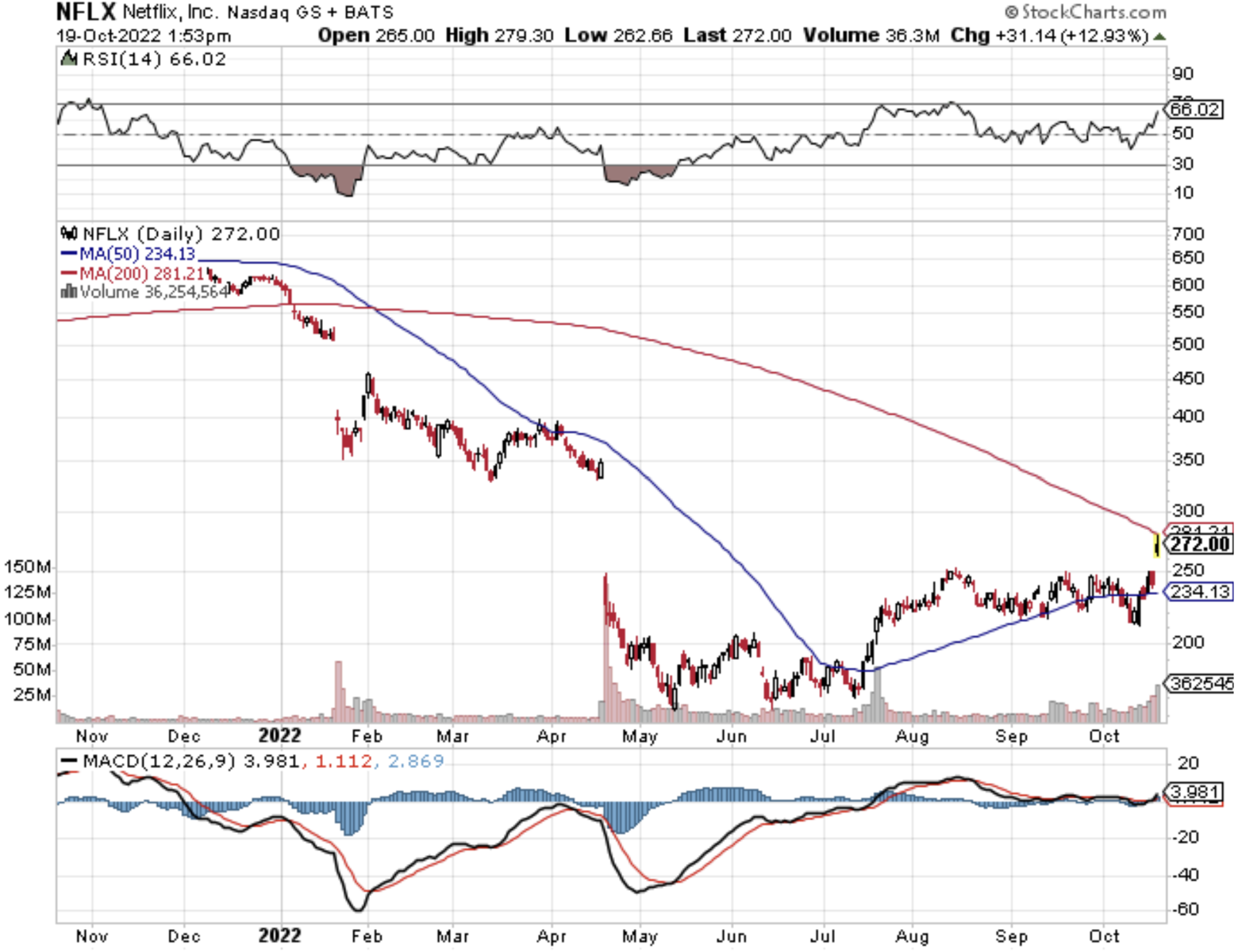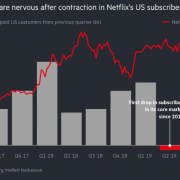Netflix (NFLX) adding 2.41 million global subscribers means the technology sector will not have the earnings apocalypse that many thought was around the corner.
It’s good news for tech stocks as a whole.
This is why tech stocks have rallied hard the last few days as well as news that there is a 100% probability of a .75% rate hike at the November 2nd Fed meeting priced into current tech valuations.
The market always loves certainty.
The multi-million subscribers added is commendable for the streaming company, but like many things in life, the devil is in the details.
Later in the earnings report, Netflix management says that “aggregate annual direct operating losses this year alone could be well in excess of $10 billion, compared with our +$5-$6 billion of annual operating profit.”
In short, Netflix is adding subscribers, at least this past quarter, but not in a profitable way.
They have had to dilute the quality of their services by integrating an ad model which goes against the spirit of what Neflix was intended to be.
Not only tech companies, but companies around the world are decreasing the quality of services through shrinkflation or “smart” packaging or just offering a worse version of a previously better iteration.
Costs have come up for everyone too but I don’t believe losing over $10 billion in annual operating losses will sit well with tech investors.
That means that Netflix must either raise the quality of their content so customers are inclined to pay higher prices or integrate more ads into their ad models.
The question must be asked, how much are Netflix subscribers willing to pay for a monthly service?
The premium package is already $19.99 and my bet is that NFLX experiences serious attrition if they go to $25 per month.
The ad version being priced at $6.99 is being too hyped up and I see it as a net negative for NFLX.
I don’t believe NFLX can do the undoable which is ramping up the quality of content in the short term.
Earnings apocalypse is off the table precisely because Americans are still spending because they still have jobs.
Yet, this sets the stage for weaker and shorter bear market rallies followed by thundering sell-offs.
This isn’t just about one indicator versus the next.
It was current US Treasury Secretary Janet Yellen who responded to a reporter in the past that she wasn’t worried about America’s large federal debt because “interest rates were low.”
Well, now there is finally a cost to rolling over that federal debt and tech stocks are valued lower for it.
Netflix is a symptom, not the main virus.
That is why Netflix adds over 2 million subscribers but will lose $10 billion annually to do it. This is also why the US economy boasts of full employment but has a negative GDP. As the zombie companies pile up, the key is to preserve free cash flow and as for the tech market, sell any big bear market rally.
US consumers still have money and they will have enough if they don’t lose their jobs, but the Fed is hoping to artificially induce a job crisis.



